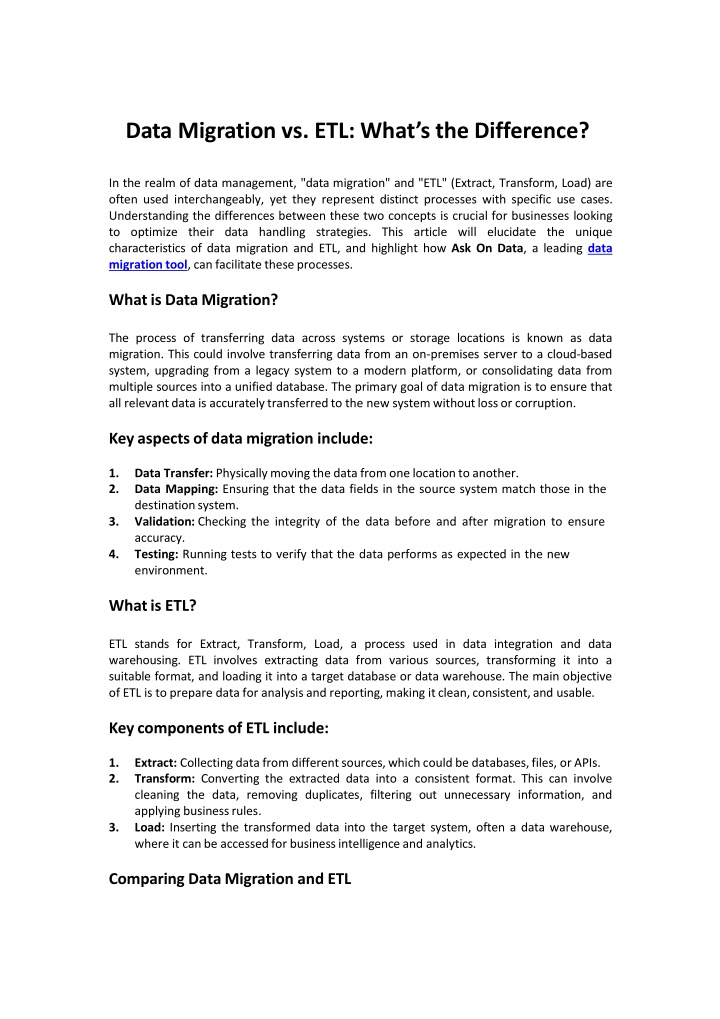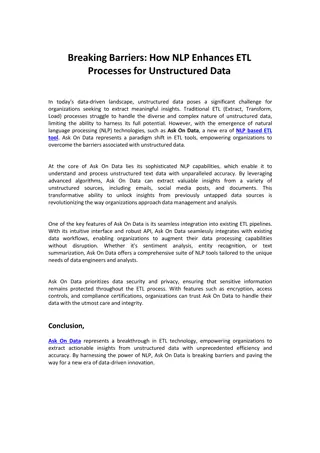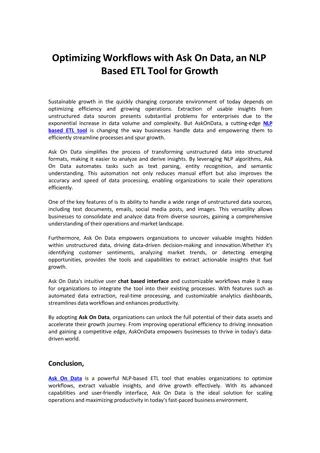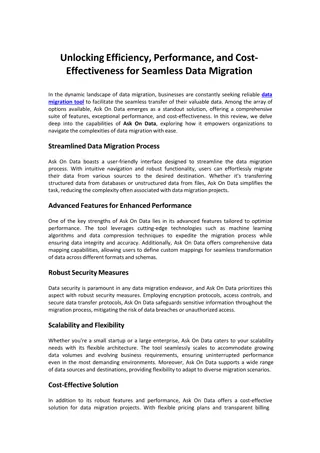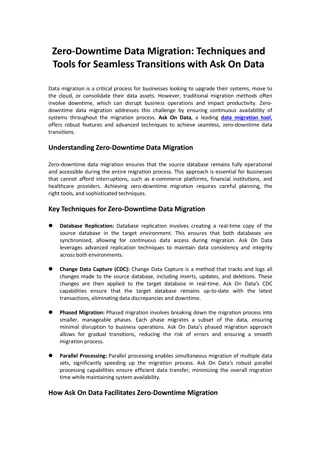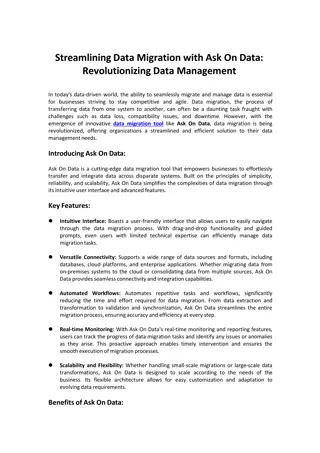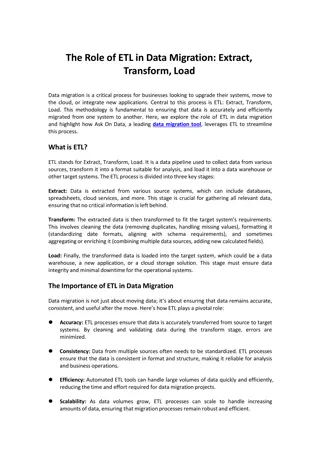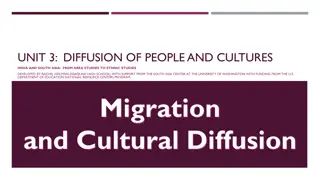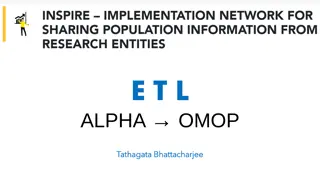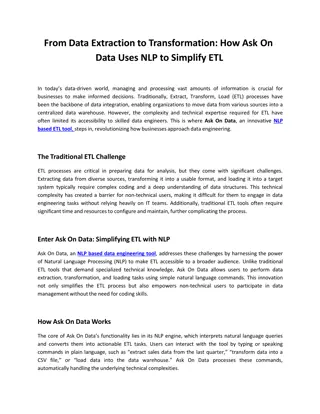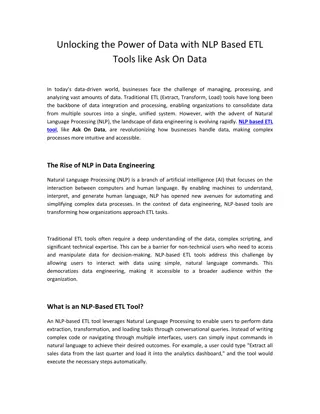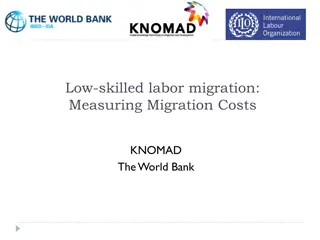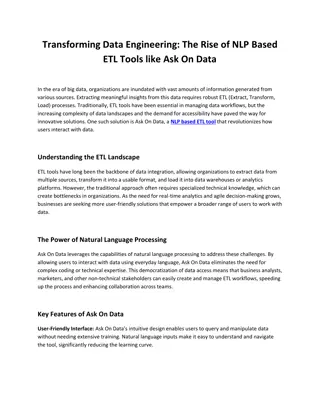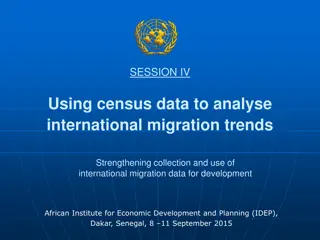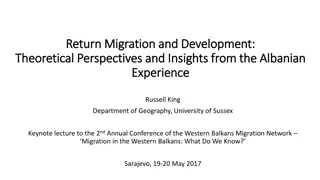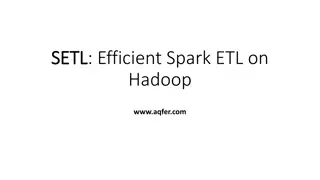Data Migration vs ETL Key Difference
In the realm of data management, "data migration" and "ETL" (Extract, Transform, Load) are often used interchangeably, yet they represent distinct processes with specific use cases. Understanding the differences between these two concepts is crucial for businesses looking to optimize their data handling strategies. This article will elucidate the unique characteristics of data migration and ETL, and highlight how Ask On Data, a leading data migration tool, can facilitate these processes.
Download Presentation

Please find below an Image/Link to download the presentation.
The content on the website is provided AS IS for your information and personal use only. It may not be sold, licensed, or shared on other websites without obtaining consent from the author.If you encounter any issues during the download, it is possible that the publisher has removed the file from their server.
You are allowed to download the files provided on this website for personal or commercial use, subject to the condition that they are used lawfully. All files are the property of their respective owners.
The content on the website is provided AS IS for your information and personal use only. It may not be sold, licensed, or shared on other websites without obtaining consent from the author.
E N D
Presentation Transcript
Data Migration vs. ETL: Whats the Difference? In the realm of data management, "data migration" and "ETL" (Extract, Transform, Load) are often used interchangeably, yet they represent distinct processes with specific use cases. Understanding the differences between these two concepts is crucial for businesses looking to optimize their data handling strategies. This article will elucidate the unique characteristics of data migration and ETL, and highlight how Ask On Data, a leading data migrationtool,canfacilitatetheseprocesses. Whatis DataMigration? The process of transferring data across systems or storage locations is known as data migration. This could involve transferring data from an on-premises server to a cloud-based system, upgrading from a legacy system to a modern platform, or consolidating data from multiple sources into a unified database. The primary goal of data migration is to ensure that all relevantdatais accuratelytransferredto the new systemwithoutlossor corruption. Keyaspectsofdata migration include: 1. 2. Data Transfer:Physically movingthedata from one locationtoanother. Data Mapping: Ensuring that the data fields in the source system match those in the destinationsystem. Validation: Checking the integrity of the data before and after migration to ensure accuracy. Testing: Running tests to verify that the data performs as expected in the new environment. 3. 4. Whatis ETL? ETL stands for Extract, Transform, Load, a process used in data integration and data warehousing. ETL involves extracting data from various sources, transforming it into a suitable format, and loading it into a target database or data warehouse. The main objective of ETL is to prepare datafor analysisand reporting,making itclean,consistent,and usable. Keycomponents of ETL include: 1. 2. Extract: Collectingdatafrom differentsources,whichcouldbe databases,files, orAPIs. Transform: Converting the extracted data into a consistent format. This can involve cleaning the data, removing duplicates, filtering out unnecessary information, and applying businessrules. Load: Inserting the transformed data into the target system, often a data warehouse, where it canbe accessedfor businessintelligenceand analytics. 3. Comparing Data Migration and ETL
While both data migration and ETL involve moving data, their purposes and processes differ significantly. Objective: Data Migration: Focuses on relocating data from one system to another, typically during systemupgrades orcloudtransitions. ETL: Aims to integrate and prepare data for analysis, ensuring it is clean and consistent for reportingand analytics. Complexity: Data Migration: Often involves one-time, bulk transfers of data with minimal transformation. ETL: Requires ongoing, complex transformations to make data analysis-ready, often running onscheduledintervals. Outcome: Data Migration: Results in data being available in a new system, ready for daily operations. ETL: Produces a dataset that is structured and optimized for querying and analysis in a data warehouse. HowAsk On Data FacilitatesBoth Processes AskOnData is a versatile tool designed to handle both data migration and ETL processes efficiently. Itsfeaturesinclude: Automated Data Mapping: Simplifiesthe processof matching data fields between sourceand destinationsystems. Data Validation and Testing: Ensures the integrity and accuracy of data throughout the migrationand transformationprocesses. Scalable Architecture: Handles large volumes of data efficiently, making it suitable for bothone-timemigrationsand ongoing ETLoperations. User-Friendly Interface: Allows users to configure and manage data workflows without extensivetechnical expertise. By leveraging Ask On Data, businesses can streamline their data migration projects and optimize their ETL processes, ensuring that data is both accurately transferred and readily availableforanalysis. Conclusion: While data migration and ETL serve different purposes within data management, both are essential for modern businesses. Understanding their differences and utilizing tools like Ask On Data can significantly enhance data handling capabilities, ensuring smooth transitions and reliable dataanalytics.
